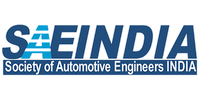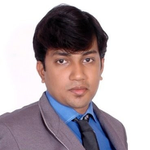Event Details
Session Brief:
The primary objective of the session is to provide an overview of the multirotor design, its sizing, design challenges and possible solutions. Initially, the session will cover in brief the current innovations and advancements in UAV sectors, their unique capabilities, and the present developmental status. Subsequently, the need to choose a multirotor over other aerial platforms will be explained through comparison, application standpoint while understanding multirotor architecture and basic flight controls. Upon this introduction, the session continues to focus on the design approach first by understanding the basic terminologies like power loading, disc loading and important concepts from momentum theory. In the preliminary design, core areas concerning mission analysis, weight estimation, method(s) to shortlist propulsion system, power estimation would be described. Here, the criticality of a fixed-point iteration in the design considering all the primary parameters would be highlighted. Further, details on necessary performance analysis and the procedures to correlate the selected propulsion system to mission profile whilst complying with the said objectives would be suggested.
In the second half, the session highlights the design challenges in switching the theoretical calculations to reality during market analysis, systems' supply chain, and the methodologies to tweak the design accordingly. In the end, basic understanding of flight modes, the challenges and requisite concerning PID tuning for infamous ARDUPILOT firmware would be explained to aid students understand and decipher the challenges in multirotor flight testing.
Profile:
- Over 6+ years of varied experience in aerodynamics, aero-handling qualities, aircraft design (conceptual to detail design), development and flight testing
- Contributed towards major developmental flight test and simulator development programs - Bell 525, Bell 505 and Bell 407
- Involved in detailed interpretation of FAA Part 29. Subpart B – FLIGHT regulations, compliance with flight test data and drafting certification reports
- Experience in testing and evaluating multi-weight class (Class I [5-10kg] & Class II [10-30kg]), fixed wing Unmanned Aerial Vehicles (UAVs) as both test pilot and test engineer (FTE)
- Granted single owner patent for proposing innovative methods to achieve greater vertical and forward flight performance Patent granted: "Segmented Ducts for Tilting Proprotors", Patent number: 10988245 (Granted: 2021)
- Designed, developed and demonstrated flight capabilities of multiple aircraft platforms: Joined/Box Winged, Blended Wing, Amphibian, Polyhedral modular aircraft from conceptual phase to prototyping and test fly them to concur with said objectives
- Trained Radio Controlled (RC) Fixed wing Pilot
Currently working as a Sr. Flight Test Engineer @ AI & Robotics Foundation(ARTPARK), Indian Institute of Science under Advanced Air Mobility & Centre for Advanced Manufacturing for Robotics and Autonomous Systems (CAMRAS)




